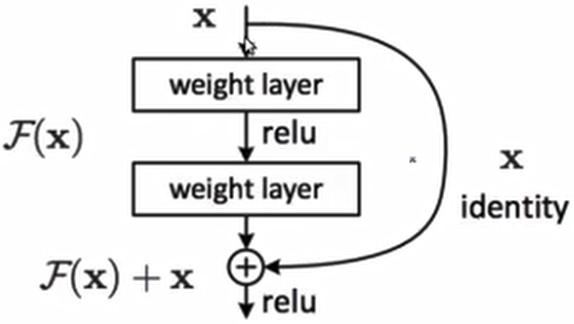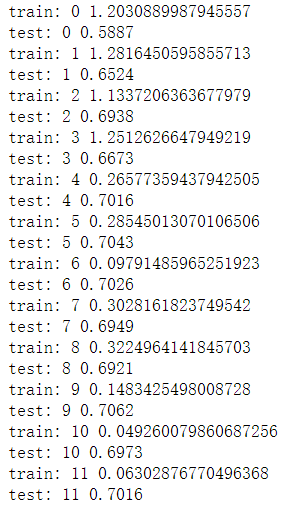import torchfrom torch import nn, optimimport torch.nn.functional as Ffrom torch.utils.data import DataLoaderfrom torchvision import datasets, transforms
batch_size=32cifar_train = datasets.CIFAR10(root='cifar', train=True, transform=transforms.Compose([ transforms.Resize([32, 32]), transforms.ToTensor(),]), download=True)
cifar_train = DataLoader(cifar_train, batch_size=batch_size, shuffle=True)
cifar_test = datasets.CIFAR10(root='cifar', train=False, transform=transforms.Compose([ transforms.Resize([32, 32]), transforms.ToTensor(),]), download=True) cifar_test = DataLoader(cifar_test, batch_size=batch_size, shuffle=True)
class ResBlk(nn.Module): def __init__(self, ch_in, ch_out, stride=1): super(ResBlk, self).__init__() self.conv1 = nn.Conv2d(ch_in, ch_out, kernel_size=3, stride=stride, padding=1) self.bn1 = nn.BatchNorm2d(ch_out) self.conv2 = nn.Conv2d(ch_out, ch_out, kernel_size=3, stride=1, padding=1) self.bn2 = nn.BatchNorm2d(ch_out) if ch_out == ch_in: self.extra = nn.Sequential() else: self.extra = nn.Sequential( # 1×1的卷积作用是修改输入x的channel # [b, ch_in, h, w] => [b, ch_out, h, w] nn.Conv2d(ch_in, ch_out, kernel_size=1, stride=stride), nn.BatchNorm2d(ch_out), ) def forward(self, x): out = F.relu(self.bn1(self.conv1(x))) out = self.bn2(self.conv2(out))
# short cut out = self.extra(x) + out out = F.relu(out) return out class ResNet18(nn.Module): def __init__(self): super(ResNet18, self).__init__() self.conv1 = nn.Sequential( nn.Conv2d(3, 64, kernel_size=3, stride=3, padding=0), nn.BatchNorm2d(64), ) # followed 4 blocks # [b, 64, h, w] => [b, 128, h, w] self.blk1 = ResBlk(64, 128, stride=2) # [b, 128, h, w] => [b, 256, h, w] self.blk2 = ResBlk(128, 256, stride=2) # [b, 256, h, w] => [b, 512, h, w] self.blk3 = ResBlk(256, 512, stride=2) # [b, 512, h, w] => [b, 512, h, w] self.blk4 = ResBlk(512, 512, stride=2) self.outlayer = nn.Linear(512*1*1, 10) def forward(self, x): x = F.relu(self.conv1(x)) # 经过四个blk以后 [b, 64, h, w] => [b, 512, h, w] x = self.blk1(x) x = self.blk2(x) x = self.blk3(x) x = self.blk4(x) # print("after conv:", x.shape) # [b, 512, 2, 2] # [b, 512, h, w] => [b, 512, 1, 1] x = F.adaptive_avg_pool2d(x, [1, 1]) x = x.view(x.size(0), -1) # [b, 512, 1, 1] => [b, 512*1*1] x = self.outlayer(x) return x
def main():
########## train ########## #device = torch.device('cuda') #model = ResNet18().to(device) criteon = nn.CrossEntropyLoss() model = ResNet18() optimizer = optim.Adam(model.parameters(), 1e-3) for epoch in range(1000): model.train() for batchidx, (x, label) in enumerate(cifar_train): #x, label = x.to(device), label.to(device) logits = model(x) # logits: [b, 10] # label: [b] loss = criteon(logits, label) # backward optimizer.zero_grad() loss.backward() optimizer.step() print('train:', epoch, loss.item()) ########## test ########## model.eval() with torch.no_grad(): total_correct = 0 total_num = 0 for x, label in cifar_test: # x, label = x.to(device), label.to(device)
# [b] logits = model(x) # [b] pred = logits.argmax(dim=1) # [b] vs [b] total_correct += torch.eq(pred, label).float().sum().item() total_num += x.size(0) acc = total_correct / total_num print('test:', epoch, acc)
if __name__ == '__main__': main()















评论